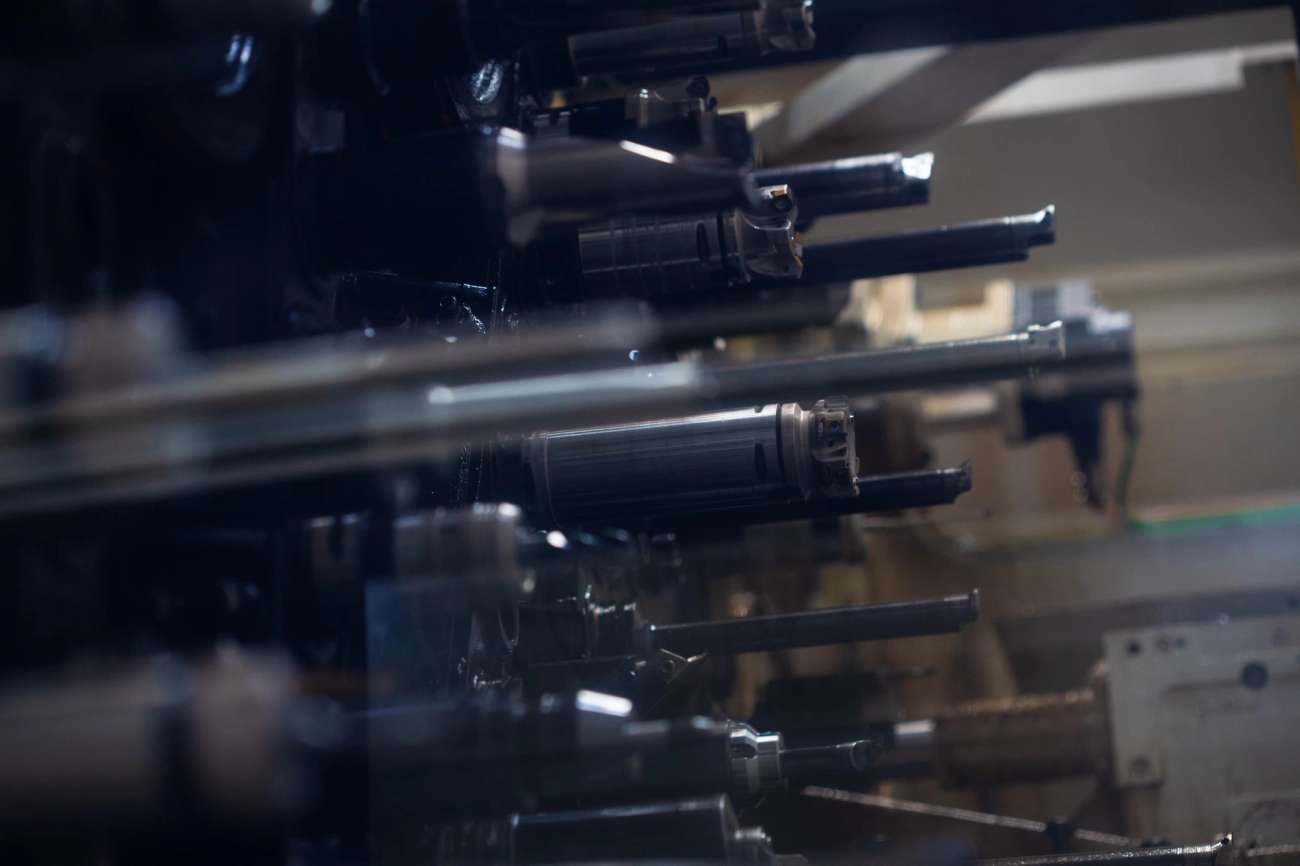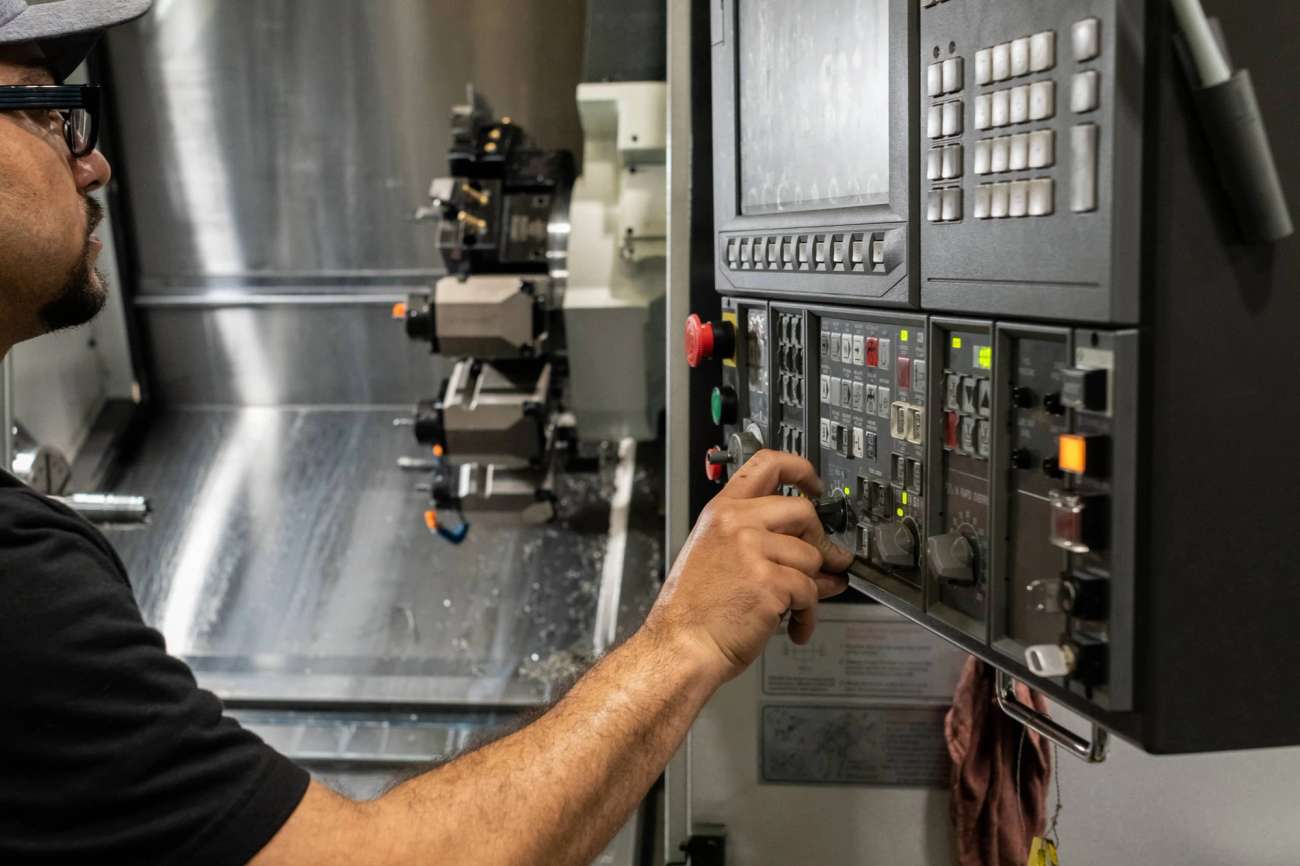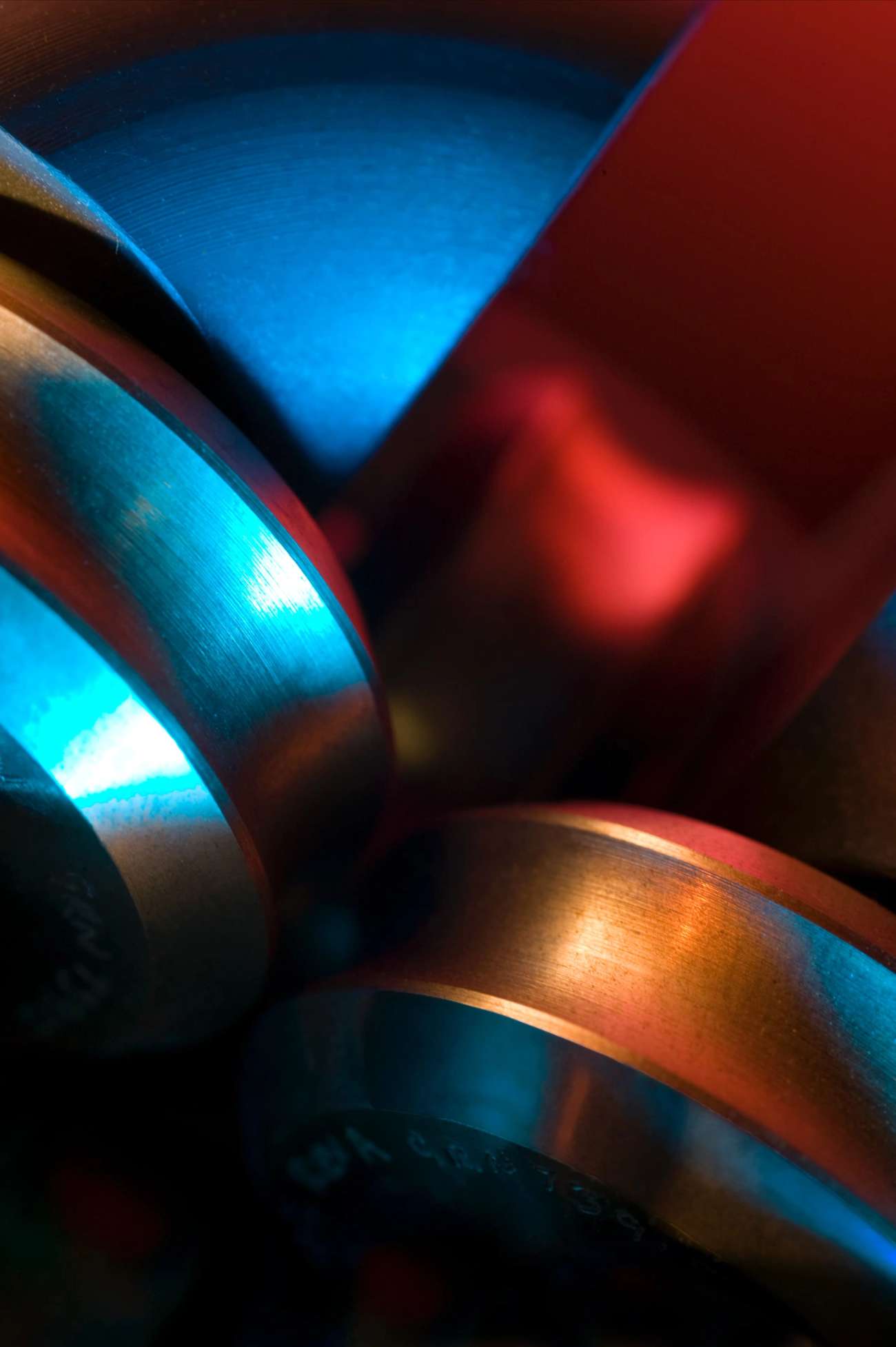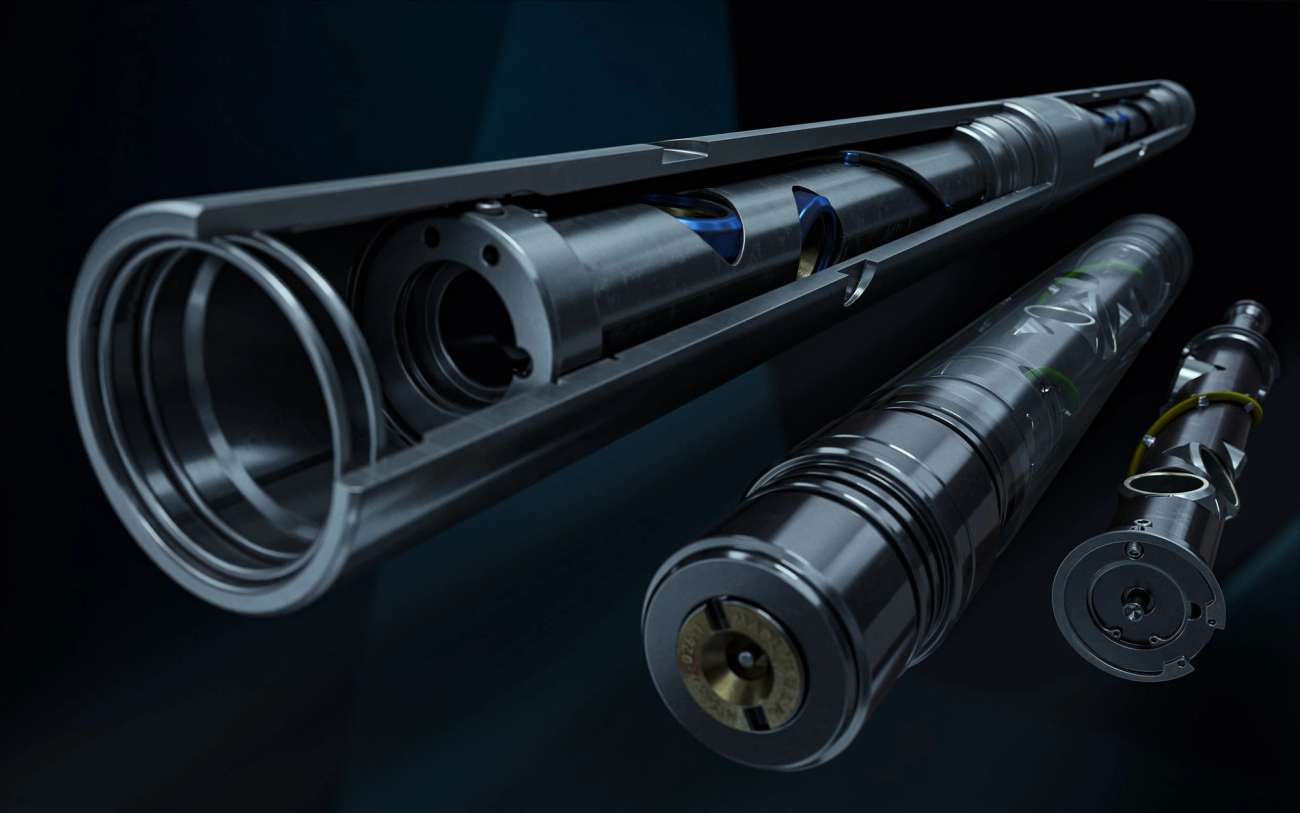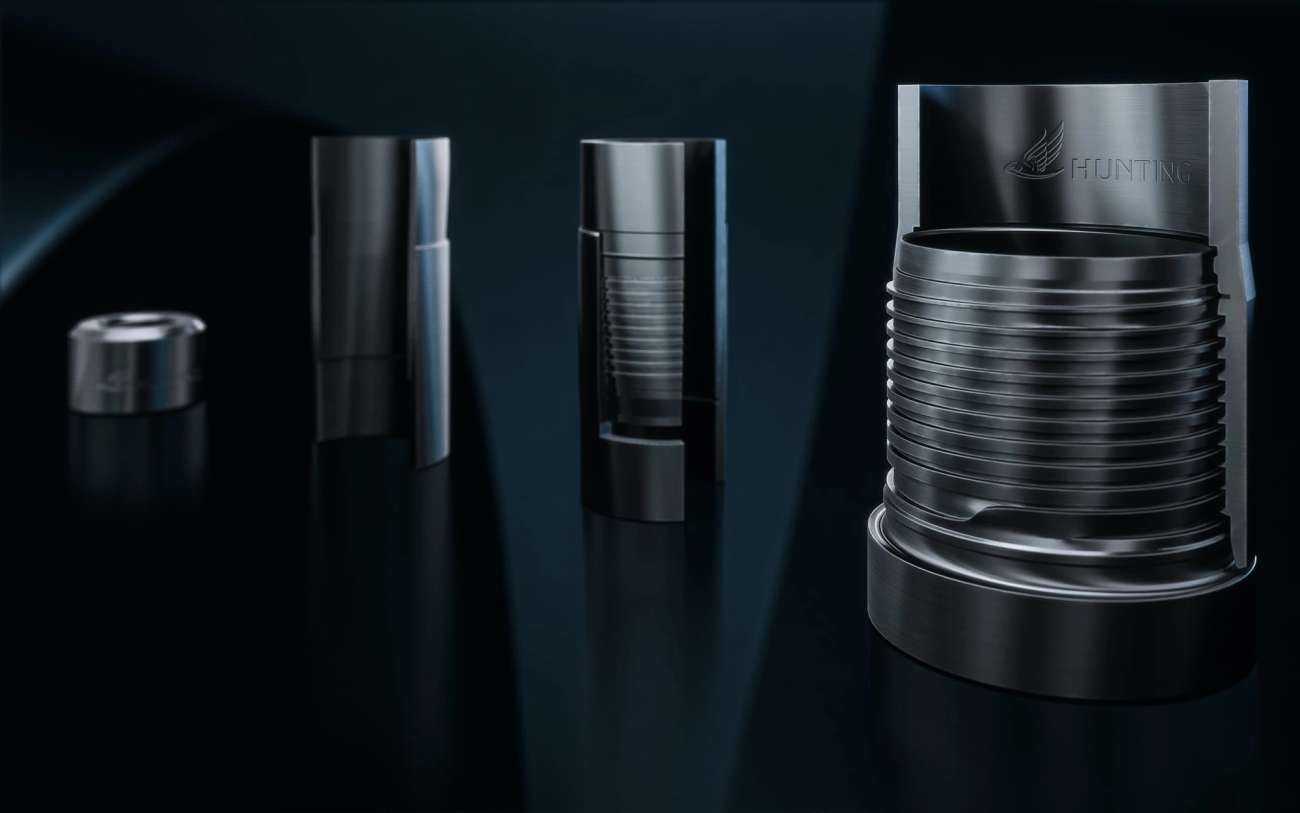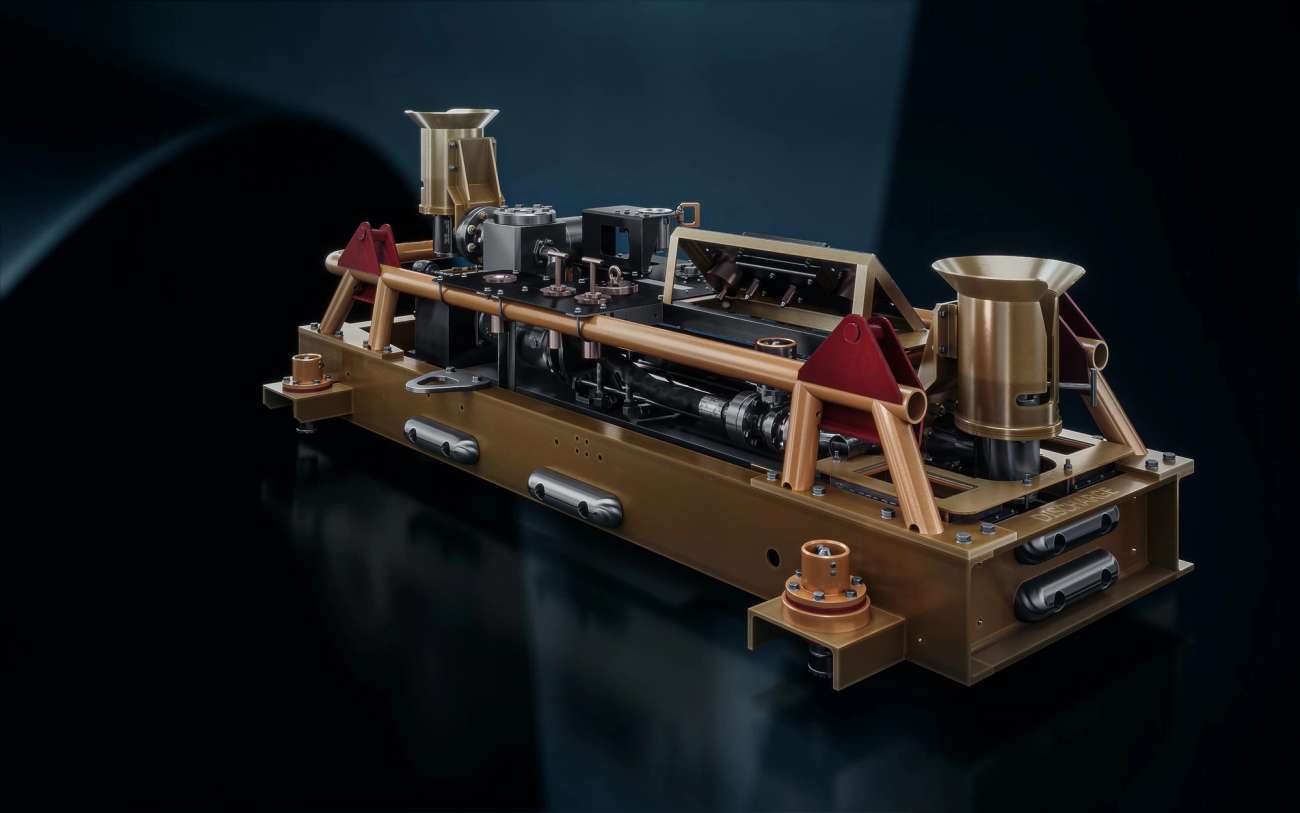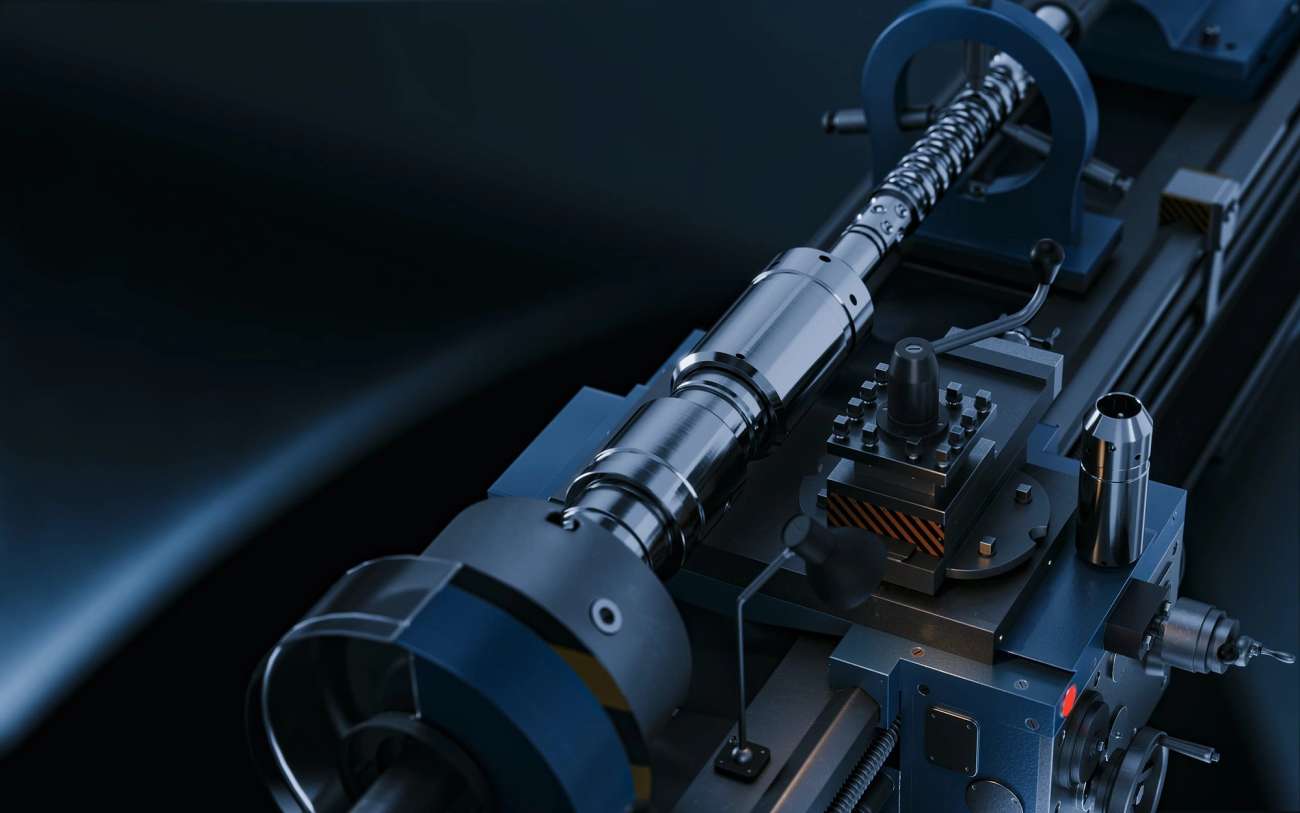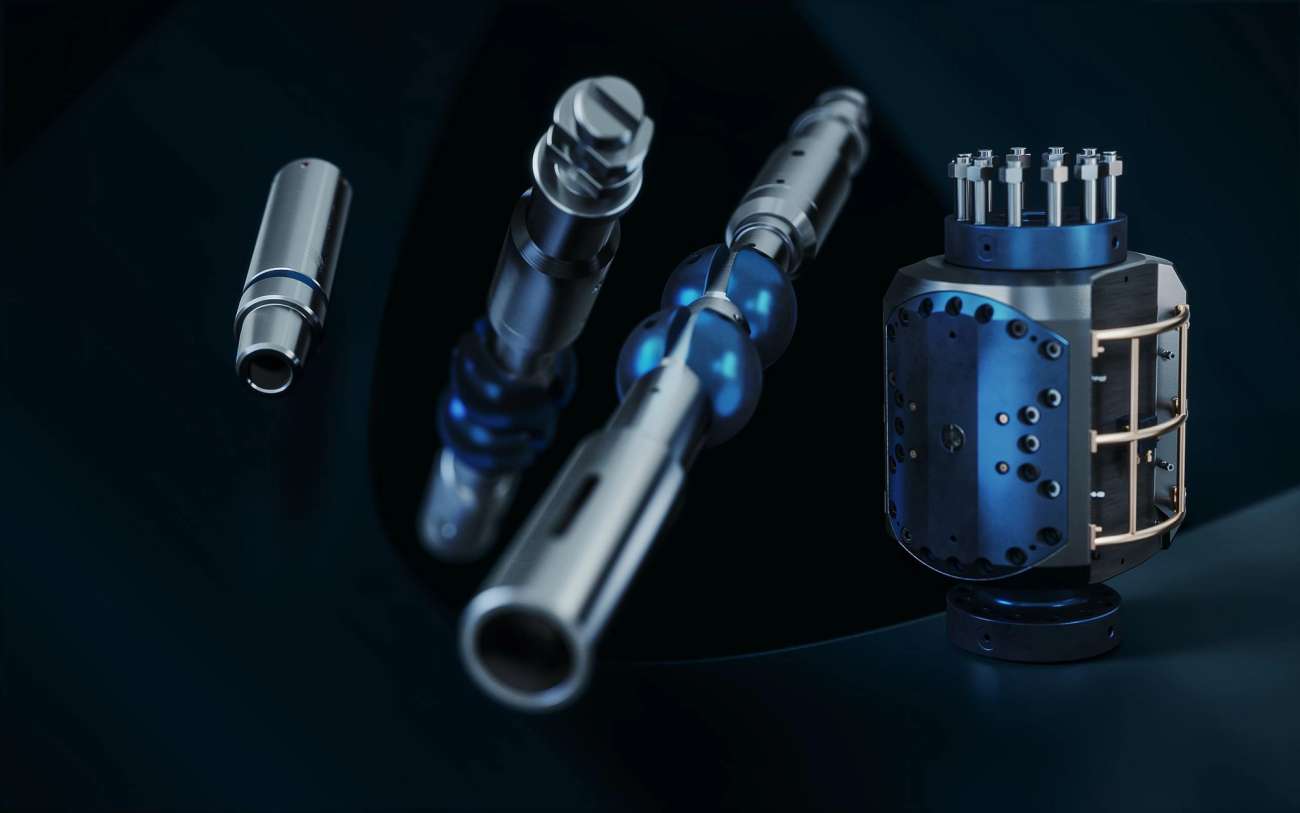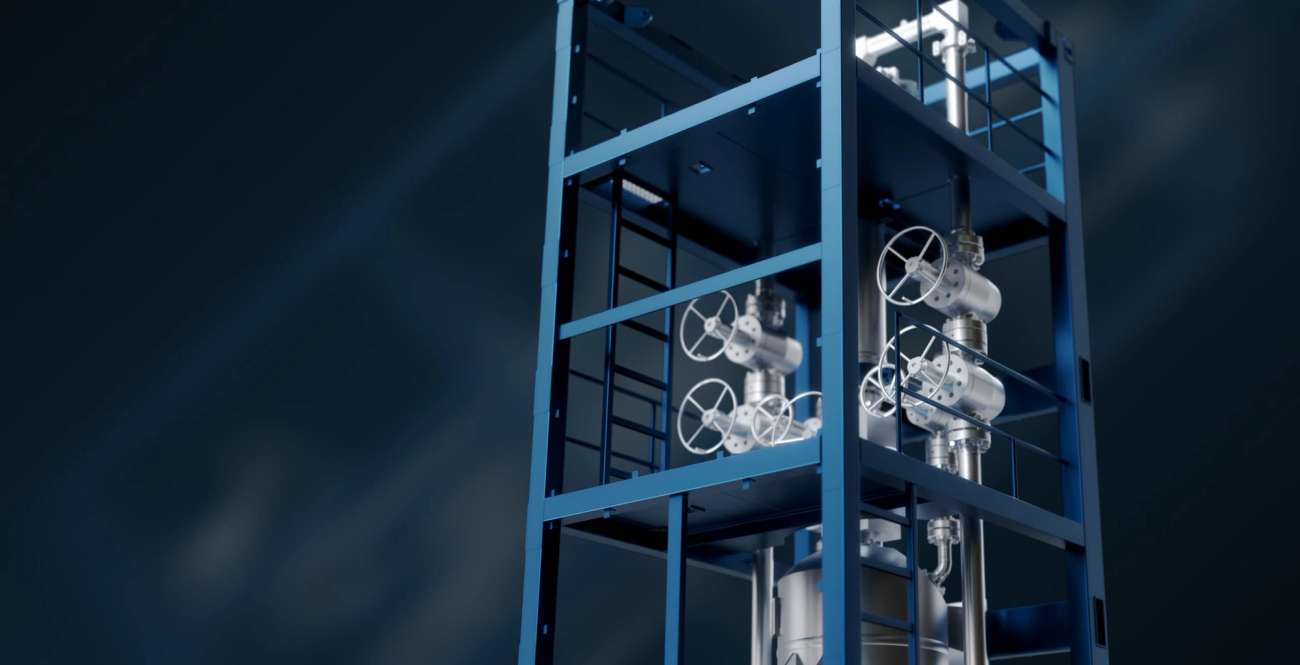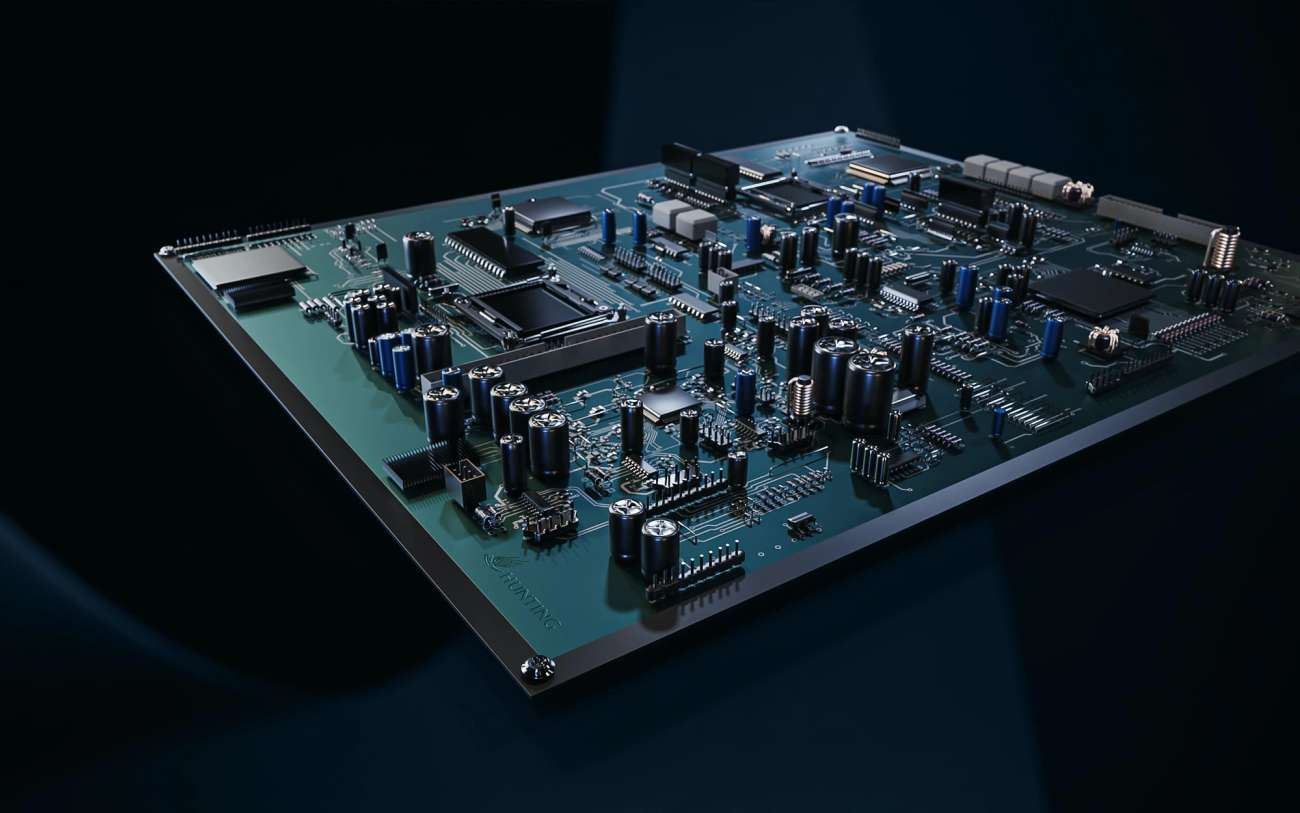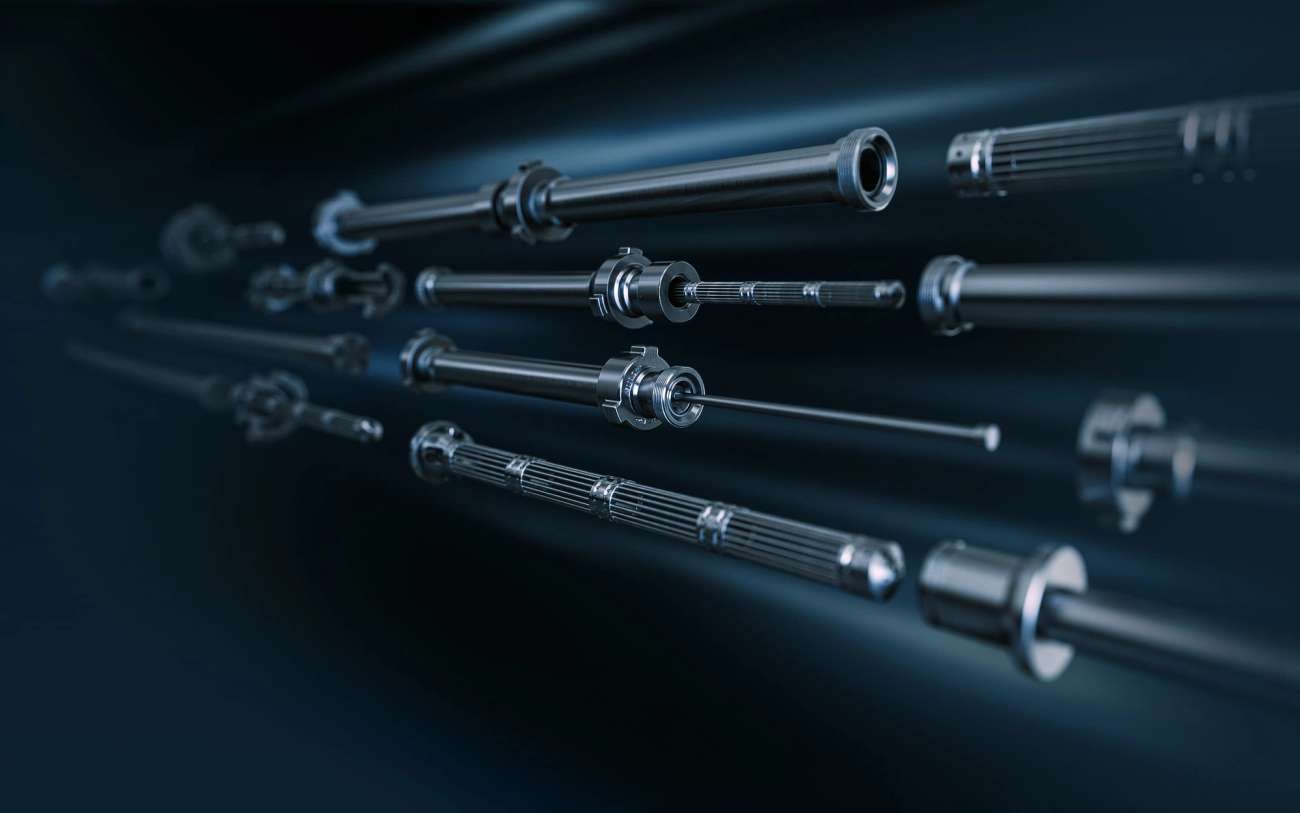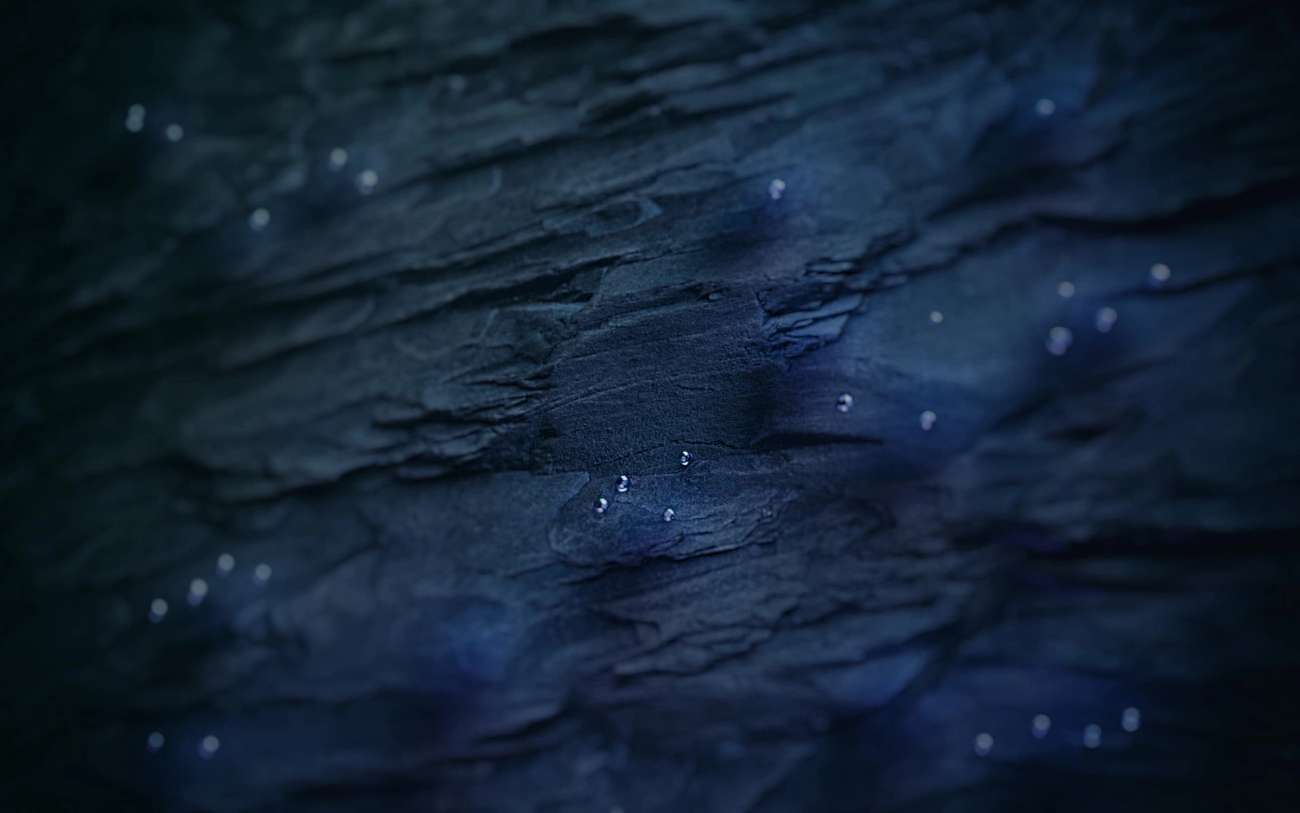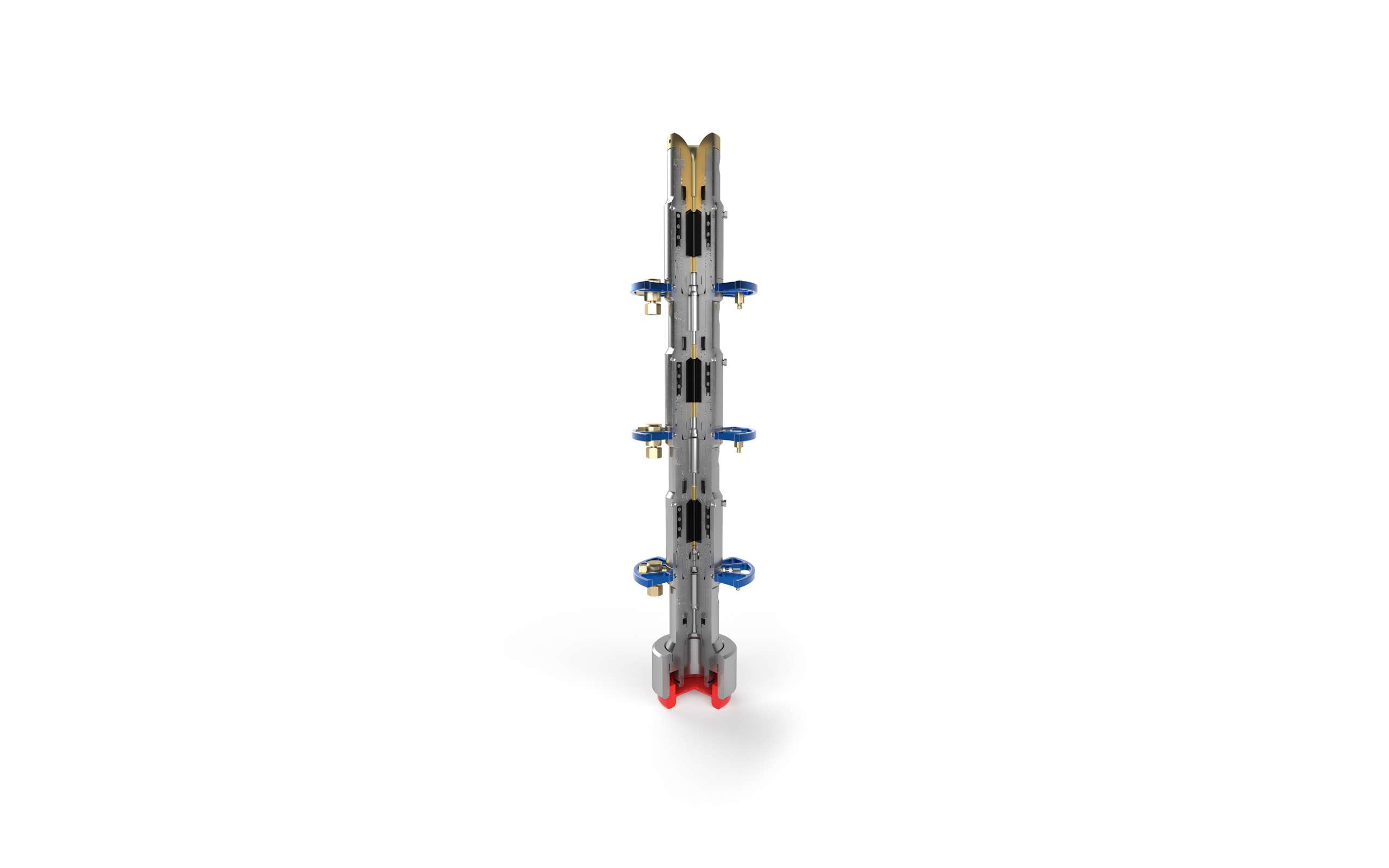
Product summary
The Hunting Pressure Control Head (PCH) Stripper is designed to seal around greaseless wireline using hydraulic pressure.
This prevents well fluids and /or gases within the lubricator from polluting the well site as the wireline is run in and out of the well bore.
The introduction and improvements with Hunting Type 3 PCH is a major step change in the performance, operational flexibility and ease of maintenance when running coated wirelines.
There is a grease injection port between the pack offs to initially lubricate the dry line during run in hole, but also reducing friction and enhancing the life of the elements. An additional injection port has also been included to the top funnel to lubricate the line before entering the PCH.
The PCH Type 3 Stripper can be run in singles, dual, triple (or quad) configurations, each with a pressure rating of 15,000 PSI. Connections used to attached the PCH Stripper to the lubricator are most commonly of the self-aligning quick union type. Other customers specified connections are available upon request.
All PCH Strippers incorporate a safety check valve, should the line break and be pulled out of the PCH Stripper Packing. In this event, as the well pressure tries to escape through the hole left in the Check Valve Housing, it will force the safety check valve ball bearing up.
Features
Designed for working pressures up to 15,000 PSI
Interchangeable modular system that can be run in Single, Dual, Triple or any number of configurations
Improved wear resistance on internal brass and rubbers
Less parts, extremely easy to assemble and service while on job site
Line components can be removed and elements changed while cable is threaded through the assembly without the need for additional equipment option
Ported for inject/vent valve capability (adiabatic heating operations)
Benefits
Standardised, interchangeable parts simplifies inventory
Reduces the weight and operational risks associated with manual handling
Ease of installation saves valuable operation time
Service components reduce the frictional bind and wear on seals


